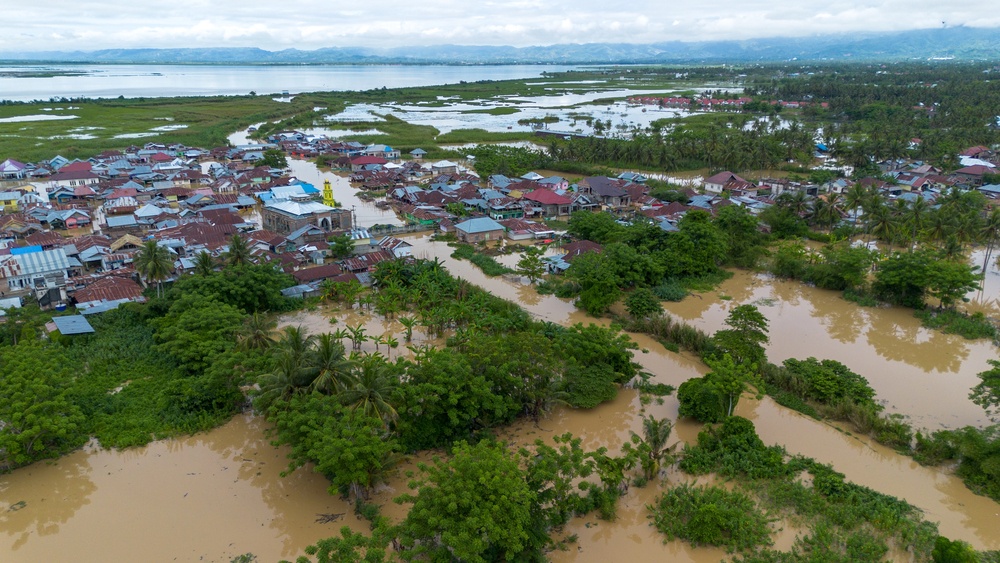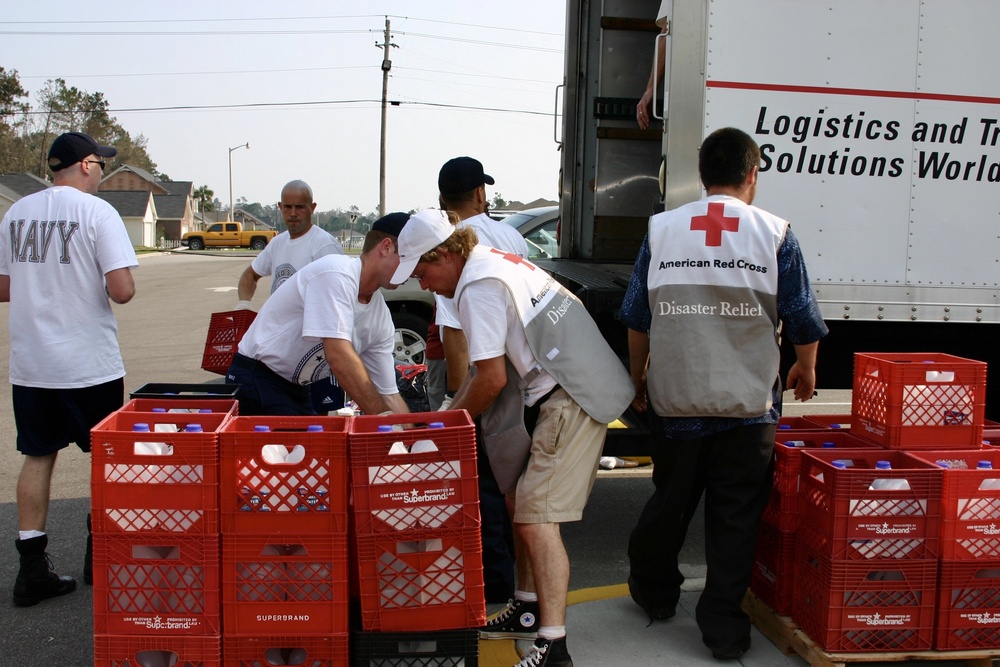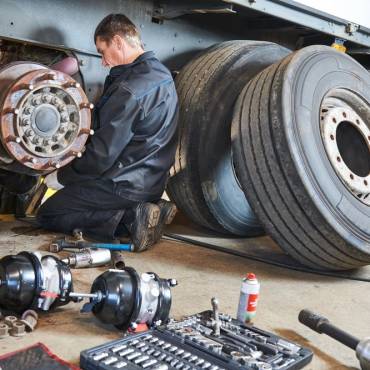Every year, an estimated 40-50,000 lives are lost to natural disasters across the globe. Whether it’s an earthquake, flood, tornado, or anything in between, the first 72 hours after a disaster are crucial to save as many lives as possible. But a disaster relief operation doesn’t materialize out of thin air. Careful planning and disaster logistics go into a successful emergency management response, and oftentimes, local trucking companies and warehouses step in to help.
Below, learn more about the role of logistics in disaster management, and how you can prep your facility for an emergency logistics response.
What is disaster logistics?
Disaster logistics is the process of transporting essential supplies – like food and water, medical equipment, mechanical parts, and volunteers – to support humanitarian aid efforts after a disaster. All types of transportation can be involved, from semi trucks and offroad vehicles to boats or helicopters, depending on the location and state of major roads.
The role of 3PLs and private partnerships in emergency management
Disaster logistics efforts are usually joint efforts between the government, humanitarian aid groups, and private companies, like third-party logistics providers (3pls.)
Every organization involved must come together to create a united front with clear communication and the ability to adapt on the fly. But the actions of a private logistics provider can make all the difference in the first 72 hours.
The three phases of disaster logistics management
Emergency logistics responses are divided into three separate phases: Preparedness, response, and reconstruction. You can see the role that private logistics companies play in each phase below.
Preparedness
The preparedness phase of logistics management involves making sure that a logistics provider has the necessary supplies, plans, and bandwidth to respond during emergencies. Some of the ways a private 3PL can prepare for an emergency response include the following measures:
- Optimizing your warehouse layout: Lay out your warehouse so that disaster response essentials, such as pallets of bottled water or medical kits, are in an easy-to-access space, ideally near loading areas. When disaster strikes, you’ll be ready to get these essential supplies unloaded and on the road.
- Make a plan: Create plans for different kinds of disaster scenarios and ideally run drills with your staff. By practicing a disaster response scenario, you can identify any vulnerabilities in your trial run and create solutions before you need to deploy the plan during an actual emergency.
- Establish communication: Communication is often one of the first elements to break down in a disaster scenario, so it’s important to establish backup communication solutions during the preparedness phase, like two-way radios or satellite phones.
- Negotiating business partnerships: Oftentimes, humanitarian aid organizations or government agencies proactively coordinate with private logistics companies before disasters strike. Building these foundational relationships in advance can create faster responses. Both organizations will already know their key contacts and the basic plan.
Disaster Logistics Response
The response phase is the deployment of key resources, volunteers, and supplies during a disaster. A logistics provider will pause their usual operations and mobilize the supplies they accumulated during the preparedness phase to the areas most severely impacted. The vast majority of disaster logistics measures spring into action during this phase – and a successful response can save lives.
For example, many logistics providers offer last-mile delivery, the “final leg” of a product’s journey, like the consumer’s house or a retail store. Local drivers already driving last-mile routes already know the fastest way around town, as well as backup routes. This degree of familiarity and adaptability can save valuable time during the first 72 hours.


Reconstruction
The reconstruction phase comes after the immediate response and focuses on rebuilding after a disaster. For instance, people who have lost their homes may need temporary housing, or buildings that can serve as a school for children. The goal of the reconstruction stage is to give those impacted the temporary provisions they need to get back on their feet.
Some private logistics companies may switch back to their usual business after the initial response phase. Others may contribute to reconstruction by delivering the supplies needed for rebuilding efforts, like generators and building materials. Logistics providers can also provide temporary employment for people whose workplaces were impacted by the disaster.
Challenges during disaster logistics responses
Time is crucial when lives are in the balance. But any of the following challenges may hamper disaster response and recovery efforts. For the most efficient response, it’s imperative that logistics providers stay aware of these potential challenges and have solutions ready before disaster strikes.
- Damaged infrastructure: Key areas may be inaccessible to trucks or vehicles. But advanced logistics providers can be ready with alternate ways to deliver supplies, such as drones.
- Poor coordination: Since disaster responses usually involve multiple entities working together, one organization may not immediately understand its role, leading to redundancies or slow responses. Good planning during the preparedness stage can help you create a coordinated response where every player understands their role, even if communication breaks down.
- Lack of data: In the immediate aftermath, the severity of the damage and the areas most in-need may not be immediately clear, potentially leading to misallocations of supplies. But proactive companies can use existing data to improve their responses. For example, Walmart used data from past Florida hurricanes to anticipate where need would be greatest in the state during future disasters.
- Security concerns: Bad actors may take advantage of the chaos to commit crimes, like theft. But you can ensure that your warehouse is safe through a robust security system and vigilant staff.
Disaster logistics management: Conclusion
Disaster logistics is the art of sending essential supplies where they’re needed most after a natural disaster. Through proactive planning and excellent collaboration skills, third-party logistics companies can play a crucial role in delivering essential supplies and saving as many lives as possible.
And if you’re looking for a Rhode Island logistics company that can help in times of need, N&D Transportation is ready to partner with you. Contact us today to learn how we can mobilize your disaster logistics responses.



